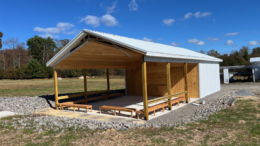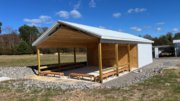Asparagus is a long-lived, perennial vegetable. Find out how to get an asparagus bed established in your home garden.
If you desire to have an early spring vegetable that is delicious, nutritious, and, once established, requires little care, asparagus may be the plant for you. Asparagus plants will last fifteen to twenty or more years. In addition, it can also be used as a border ornamental.
Asparagus shoots, the edible part, come up early in the spring. Later, when the harvest period is past, the plants grow six to eight feet tall with a soft, fine foliage that is pleasant to look at. Purchase disease-free one-year-old crowns. Male plants are preferred because they have more vigor than the female plants and produce more shoots in the spring. Also, the birds like to eat the berries of the female plants and plant them where you may not want them. There are several varieties available from garden shops and online. Choose carefully paying attention to sex, resistance to asparagus diseases and to your personal favorite. The Jersey varieties, developed by Rutgers University, are good choices. Millennium is also a good choice.
Choose a site which has eight or more hours of full sun daily. The site must be well drained.
Avoid low areas where cold air may accumulate and damage the plants from frost during cooler spring nights. A loose, deep soil is preferred.
Since these plants will last many years, it is important to prepare the soil correctly before planting. Perform a soil test. (Penn State Extension has soil test kits available for a small fee.) Prepare a bed four feet wide, remove all weeds and their roots. Add a liberal amount of well-composted manure or compost. Incorporate the soil test recommended amendments to the top six inches of soil. It is best to test and prepare the soil a year prior to planting the asparagus.
Crowns should be planted two to four weeks before the last average frost date in your area. After the bed is prepared, dig a trench that is six inches deep and twelve inches wide. Soak the crowns in water for about twenty minutes. Lay the crowns eighteen to twenty-four inches apart in the trench and backfill with about two of three inches of soil on top of them. Inspect the site
weekly looking for the plants to emerge. After emergence add another inch or two of soil. Continue this process until the trench is completely filled in, with a slight mound to allow for future soil settling. Apply an inch or two of mulch to smother weeds and conserve water. Asparagus rows should be five feet apart.
Asparagus beds benefit from a yearly top-dressing of compost and an application of nitrogen in early spring.
Pull any weeds that appear. For the first two years, water regularly but do not allow the bed to become saturated. Fertilize in the spring by top dressing with fertilizer or manure in accordance with the soil test. After the foliage dies in the fall, cut it off about an inch above the ground and lay it on the bed for winter protection. After winter is over, destroy the foliage as it may harbor disease. Add an inch or two of mulch each spring. Inspect the plants often looking for signs or symptoms of disease. Become familiar with what a healthy asparagus plant looks like so you will be able to identify an unhealthy plant.
Be patient; do not harvest any shoots during the planting year. Asparagus needs undisturbed time to develop strong crowns. Harvest during a couple weeks in the second year. In the third- year harvest for up to two months. Harvest the six to eight-inch shoots by snapping off just above grown level. All viable spears should be harvested during the harvest period. Stop harvesting once three-quarters of the spears are less than 3/8" in diameter.
Author
Steve Hamilton
Master Gardener
Columbia County









































